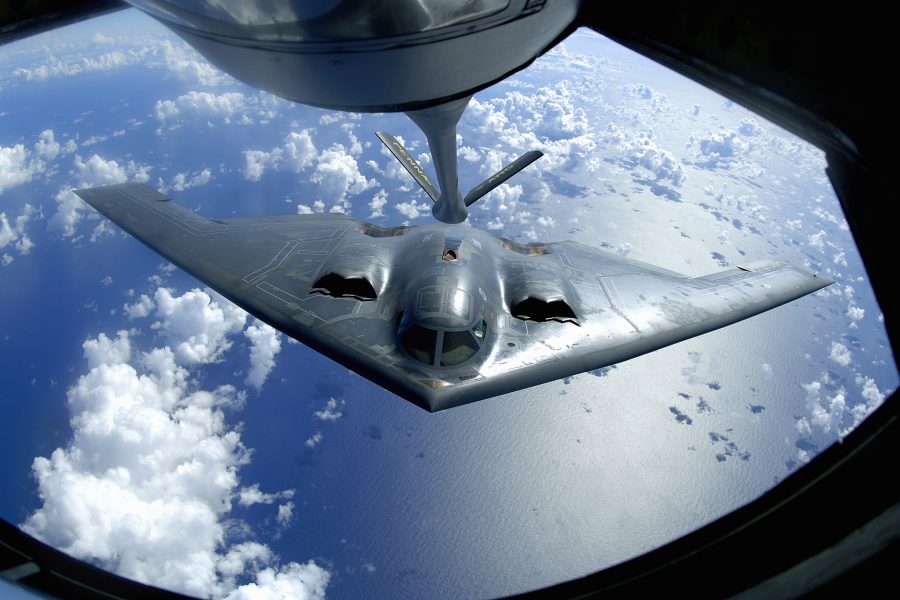HII has provided increased training opportunities for Air Mobility Command’s aircrews under the Mobility Air Forces (MAF) Distributed Missions Operations (DMO) program and has set records for unit participation since the program’s inception.
Air Mobility Command awarded the $79 million task order under the Air Force’s Training Systems Acquisition III contract, marking the first time a Major Command DMO program was transitioned to a new contractor. Despite initial skepticism over the feasibility of transitioning a mature program to a new contractor, HII made the shift and AMC didn’t miss a beat. There were no breaks in service, and the warfighters continued training.
“It was a very large, distributed network that had to be re-instantiated, so we had to come in and rework the network architecture and bring in government off-the-shelf (GOTS) tools and new processes,” said Michael Aldinger, HII Mission Technologies vice president of U.S. Air Force Live, Virtual, Constructive (LVC) Training and Enterprise Portfolio. “We worked closely with the government customer to inform them of the different challenges we faced, and what we recommended for mitigation, which could be applied to the benefit of future DMO program awards.”
The goal under this program is “to train aircrew in a secure, realistic networked environment while reducing risk and operating cost.” HII has achieved consistent success since task order award.
“In March, HII trained more aircrews in the Mobility Air Force mission profile tactical events than at any point in the program’s history,” said Aldinger.
HII’s operations team is smaller than MAF’s previous DMO contractor. Aldinger chalks their success up to the importance of competition within the defense industrial base and HII Mission Technologies’ deep expertise with enterprise training solutions.
“I attribute this success to our enterprise methodology and experience in running other distributed mission operation programs for the DOD,” he said. “HII worked across these other programs to identify the best of breed solutions which enabled us to maximize efficiencies and continue to train warfighters on the MAF DMO network. This was a huge success story for the command and HII.”
Operating under AMC Commander General Mike Minihan’s intent to ready forces for any possible threat, HII provides the MAF DMO program with the virtual side of mobility training at a pivotal moment. MAF’s full-spectrum live training exercises—like Mobility Guardian 2023 this summer—involved thousands of Airmen.
“You’ve got to expect not everyone can train in that large exercise,” says Aldinger. “We provide those aircrews an opportunity for very similar training as provided in the Mobility Guardian exercise, so they can train as they fight. We’re focused on China as the National Defense Strategy’s identified pacing challenge—we’ve developed the first four integrated Pacific theater scenarios for the program.”
With one year on the MAF DMO program under their belt, HII is already looking ahead to the next challenges faced by the program. Aldinger identifies virtual air refueling as a key next focus.
“That is really [why] the program was conceived in 2011,” Aldinger said. “It was about how we train aircrews with virtual air refueling. The Air Force could potentially save hundreds of millions of dollars if distributed virtual air refueling is achieved.”
Aldinger adds that HII Mission Technologies’ non-proprietary, enterprise solutions provide the secret sauce to these implementations and support their continued success, particularly through their development of government off-the-shelf (GOTS) tools that can be applied to the MAF program and across MAJCOMs and Services. Readily available common tools and processes are central to achieving the improved interoperability and reduced costs that the Services require.
“Our focus isn’t just HII solution’s,” said Aldinger. “We go across services to identify the best of breed solutions. I think this is something AMC appreciates. As an example, AMC is working with HII and the Navy to look at cross-domain solutions that can be used in the Coalition Virtual Guardian events. This approach can [rapidly] bring in coalition partners to train during these exercises.”


